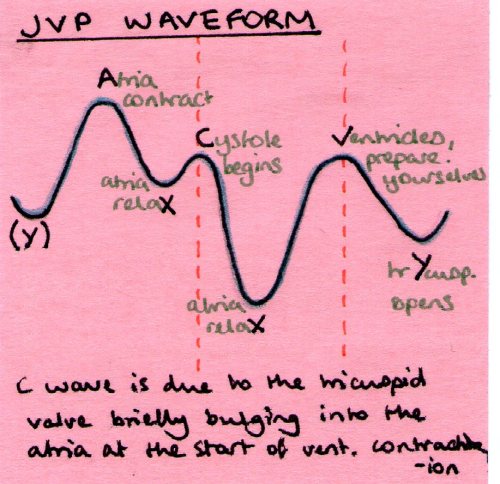#examination


04-11-18 (Sunday) //
Found some old notes from last year when I was studying for General Biology 1. Also, I just finished my final exams for degree Y1S1 yesterday! It was quite tough + intense cuz I had to sit for 2 heavy subjects’ papers, which were Human Physiology + Chemistry 1 in one day. Currently, I’m on my sem break now (yaaaaaaaaay). I’ll be back in campus in January + will be posting more before then! :D


Made these Biochemistry & Metabolism notes from last semester for my final exam :) It was my first time taking a 5 credit hour subject. Honestly, there were tons of stuffs + terms to memorize, especially the metabolic pathways. The nucleotide biosynthesis topic was really tough for me b/c I’ve never learn it before + I also had to memorize the diseases + syndromes along with how they affect the associated pathways. Well, I’m just glad that I got a GPA 4.0 for my Biochemistry & Metabolism! Hard work does pay off :)
25.03.2019 // Monday
Here’s a short time lapse video (this is my first time recording + editing a video haha) of me studying for my quiz on this coming Friday. Was reaaaaaaally busy with all the assignments + lab reports that I’ve finally managed to find the time to study for my Structural Biochemistry quiz, which will be covering 6 chapters + here I am on the first chapter (yes, I’m going to be so dead soon hahahaha).

25-02-19 (Wednesday) //
Got a Biology quiz tomorrow, wish me luck! Btw, I’ve finally gone paperless in this semester! I’m so loving it right now, it’s so much convenient + the best part is that I don’t really need to copy / write down every lengthy informations / senetences from the textbooks onto my notes like I did last semester (i.e. before I went paperless). I can just copy these lengthy texts (from pdf textbooks that’s been downloaded onto my iPad), paste them onto my lecture notes + highlight them! Hurray for the lazy me hehehe!
PS: I haven’t finish studying for the quiz yet. GG. :)
Edit: YAS I GOT A 4.0 GPA FOR MY BIOLOGY SUBJECT✨✨ Omg I’m so happy.
Day 287. #bedford365 #bedfords365 #leaf #texture #veins #detail #blackandwhite #blackandwhitephoto #blackandwhitephotography #warmtone #warmtoneblackandwhite #grass #nature #examination #everydayobject #morningwalk
Post link
What Makes Rollercoasters So Fun? A look at the science, psychology and design behind rollercoasters - with a focus on ‘The Smiler’

I’m standing watching The Smiler at Alton Towers, one of the UK’s most popular theme parks.
It’s a one-of-a-kind steel rollercoaster which gives off an 'insanity’ vibe; after all, the logo isn’t a friendly, welcoming smile, but an ecstatic Cheshire cat grin which borders on the psychotic. The soundtrack that is blasting out is overly cheery and somewhat sinister, featuring repetitive, out-of-key chanting along to heavy, distorted beats. Carriages full of Alton Towers guests fly around the inverted track and the enraptured screams emanating from them bounce and curve with every loop.

I’m pointing my phone at a particular part of the track whilst waiting for my friends and partner to come rolling over - I’m filming in slow-mo mode, so that once they get off I can present to them their creasing faces and rippling hair as they are flung forwards at speeds of 85km per hour.
Once I review the footage, one thing is clear: the people on this ride are grinning ear-to-ear. It appears The Smiler does exactly what it says on the tin.
So why am I not on this ride? Put simply, I don’t enjoy rides with a high G-force or inversions as much as I used to. I have never been a fan of suspended coasters either due to an experience I had at age 15 (warning: gross) when I embarked on a suspended rollercoaster with several loops and a jet of snot evacuated my nostril as I was thrown about all over the place. Although The Smiler isn’t a suspended coaster, my friend warned me that if I thought that Nemesis (Alton Towers’s fastest suspended coaster which I went on in 2010) 'was a bit much, you probably won’t like this one’ - so I decided to sit it out.
I didn’t completely refrain from the rollercoasters, though. I still went on Galactica, Wickerman and Th13teen (which I particularly enjoyed). But these will still be considered pretty tame by the most extreme of thrill-seekers.
Rollercoaster Tycoon and real-world physics
Although I’m not crazy about riding intense rollercoasters, I still enjoy learning about what makes certain attractions so popular. I have been an avid Rollercoaster Tycoon fan since the age of 8/9 and on Steam I have racked up over 200 hours of playtime - that equates to over a week of my adult life spent trying to please tiny, whiney 2D theme park guests who all look identical.
Did you know that Rollercoaster Tycoon incorporates real-world physics to a T? When Scottish-born Chris Sawyer designed this game in the 90s, he wasn’t messing around - for any coaster you’re building, all the specs are there, such as lateral G-force, vertical Gs, inversions, drop height, etc.

In fact, the in-game physics of Rollercoaster Tycoon mirror reality so closely that if you perform a test which rollercoaster engineers use - the 'Brachistochrone Curve’ - in the game, you get the same results as you would in reality.
If you want to build a successful rollercoaster in Rollercoaster Tycoon, you have to have some understanding of ride mechanics. For example, knowing how to ensure your ride will produce enough momentum so that a coaster car doesn’t get stuck halfway round a loop; knowing how design makes a ride too intense or boring; but most importantly, knowing how to build a coaster that brings in THAT CASH MONEY.

So, how did John Wardley (designer of The Smiler) know it would be such a huge success? What is the science behind The Smiler and why is it so many peoples’ favourite Alton Towers attraction?
Using The Smiler, I will examine three essential elements which are considered when constructing a mind-blowing coaster - the physical design of the ride, the way the ride makes guests feel and the theming used.
Let’s twist again - Inversions and G-force
The Smiler has a record-breaking 14 inversions, the most of any rollercoaster in the world. Inversions come in a variety of shapes - loops, corkscrews, barrel rolls - and they create an exciting and intense ride when there’s only so much building space available. Designer John Wardley said that the engineers “packed more track per meter of space in this ride than any other rollercoaster in the world", which probably explains why The Smiler is also one of the longest-lasting rollercoasters in the world, taking almost 3 minutes to complete a full circuit.

The Smiler also packs a whole lot of G-force thanks to the ride’s drops, twists and turns; according to Wikipedia, The Smiler’s G-force rating is a nail-biting 4.8 - keep in mind that astronauts experience a G-force of 3.0 during a rocket launch. Also keep in mind that supposedly 5 Gs is the limit a person can usually withstand before passing out. Perhaps this is why people exit The Smiler giddy and grinning like idiots - because the heavy Gs deprived their brains of oxygen.
Read the rest of the article by following the link below:









Fall In Love: Episode 12










Crazy Love: Episode 2
Notes of Archaeological Publications
http://bit.ly/176Wffy
Progetto Caere: questioni di metodo e sperimentazioni
http://bit.ly/1zrYJpS
Notes on Easter Ross.
http://bit.ly/19483iK
Another look at a Lasinja Culture Bottle from Vrlovka
http://bit.ly/1zrYNpz
Report of a recent examination of the Roman Camp at Cleghorn, Lanarkshire, styled ‘Agricola’s Camp;’ with Notices of General Roy and his Family.
http://bit.ly/10wo106
Learn more about Open Access and Archaeology at: http://bit.ly/YHuyFK
I can never remember what the different bits are on a JVP wave so here is a way to try and remember it. It’s a bit contrived, what with Cystole and trYcuspid but silly things are easier to remember.
C is the tricuspid valve closing and kind of bulging as it does. Imagine it over shooting ever so slightly then recoiling back into place.
V is the atria refilling, hence why the ventricles need to prepare for the next onslaught.
The letter refers to the bit of waveform that happened just before it. So when the atria contract they cause a bit of backflow, so the pressure in the jugular vein increases (there’s no valve into the atria, only out) causing the upswing. Then the atria relax so blood can flow into said atria, so the jugular vein empties and the pressure goes down.
Just remember that it’s the JUGULAR VENOUS pressure. Not the right atrial pressure. They’re similar, but not the same.
Post link
The examination began. This wonderful time begins with the ancient Greek language. Κύριε, ελέησον!
Post link
You ever just… Read/hear an ordinary everyday word/term, something you’ve read/heard a million times your whole life… but then, for whatever reason, that time you actually really pay attention to it and notice… Idk notice what it is? Maybe how silly it is, how cute it is, how weirdly straightforward or descriptive it is, or just the opposite?
Anyway so I just realized that fire hydrant is literally just… A thing that “hydrates” fire.
Because of course that’s the problem, the fire is thirsty is all!!
Why isn’t a tap called a human hydrant?
This is like that time some years ago that I noticed that manger, like from the Christmas Bible story, was manger, as in the French verb “to eat”. Bc it was a food trough, like what animals eat out of.
I was raised hardcore Catholic and am half French Canadian yet didn’t notice this until I was 23 and pet sitting a rabbit.
You ever just… Read/hear an ordinary everyday word/term, something you’ve read/heard a million times your whole life… but then, for whatever reason, that time you actually really pay attention to it and notice… Idk notice what it is? Maybe how silly it is, how cute it is, how weirdly straightforward or descriptive it is, or just the opposite?
Anyway so I just realized that fire hydrant is literally just… A thing that “hydrates” fire.
Because of course that’s the problem, the fire is thirsty is all!!
Why isn’t a tap called a human hydrant?








